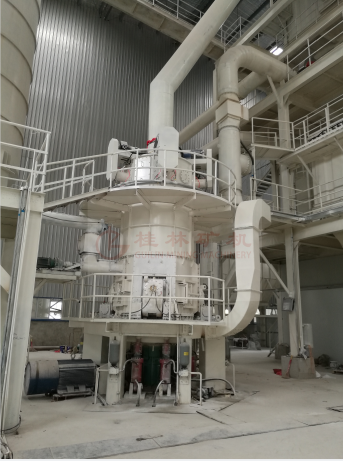Fly ash is a kind of pozzolan-like mixed material formed by high temperature combustion of coal powder. In the past industrial production, it was often directly discharged as industrial waste, which not only caused a lot of pollution, but also was a waste of materials. Since the advent of pulverizers, fly ash has been widely used after being ground by Fly ash grinding mill. It plays an increasingly important role in the cement industry, concrete engineering, construction industry and environmental protection materials. At present, fly ash is mainly used to produce fly ash cement, fly ash bricks, fly ash silicate blocks, fly ash aerated concrete and other building materials, and can also be used as agricultural fertilizers and soil conditioners. There are hundreds of uses of fly ash for recycling industrial raw materials and environmental materials. The following is an introduction to its main uses.

Applying in cement industry and concrete engineering after being ground by fly ash ultra-fine vertical mill:
Fly ash replaces the clay raw material to produce cement. It is a hydraulic cementitious material made of Portland cement clinker and fly ash with an appropriate amount of gypsum and finely ground. The cement industry uses fly ash to make use of the unburned charcoal; Fly ash is used as a cement admixture; fly ash is used to produce low-temperature synthetic cement. The production principle is to first steam the ingredients to form hydrates, and then undergo dehydration and low-temperature solid-phase reaction to form cement minerals; fly ash is used to make clinker-free cement. Including lime fly ash cement and pure fly ash cement, lime fly ash cement is made by mixing dry fly ash with 30% quicklime or slaked lime and a small amount of gypsum, or separately finely and then mixed evenly. Hydraulic cementitious material; fly ash is used as an admixture for mortar or concrete. Adding fly ash to concrete to replace part of cement or fine aggregate can not only reduce costs, but also improve the workability and durability of concrete. Water permeability, gas permeability, sulfate resistance and chemical attack resistance, reducing heat of hydration, improving high temperature resistance of concrete, reducing particle separation and water separation, reducing shrinkage and cracking of concrete, and inhibiting stray current on steel bars in concrete. corrosion.
Applying in building products after being ground by fly ash ultra-fine vertical mill:
Steamed fly ash bricks use power plant fly ash and quicklime or other alkaline activators as the main raw materials, and can also be mixed with an appropriate amount of gypsum, and a certain amount of aggregates such as cinder or water-quenched slag. After processing, stirring A wall material formed by digestion, rolling, pressing and curing at atmospheric pressure or high pressure steam; sintered fly ash bricks are made of fly ash, clay and other industrial wastes as raw materials. Forming, drying, and firing into bricks; autoclaving to produce foamed fly ash thermal insulation bricks, using fly ash as the main raw material, adding a certain amount of lime and foaming agent, through batching, stirring, injection molding and autoclaving. A new type of thermal insulation brick; fly ash silicate block, with fly ash, lime, gypsum as cementitious material, coal slag, blast furnace slag, etc. as aggregate, adding water, stirring, vibration molding, and steam curing. body material; fly ash aerated concrete, a porous lightweight building material made of fly ash as raw material, adding quicklime, cement, gypsum and aluminum powder in an appropriate amount, adding water, stirring to form a slurry, and injecting into a mold for steam curing; fly ash Ash ceramsite is a kind of artificial lightweight aggregate made of fly ash as the main raw material, mixed with a small amount of binder and solid fuel, mixed, pelletized and fired at high temperature; fly ash is lightweight and heat-resistant Brick is made of fly ash, burnt stone, soft soil and wood chips. It has high thermal insulation efficiency, high refractoriness and low thermal conductivity, which can reduce the thickness of the furnace wall, shorten the firing time, and reduce fuel consumption. Improve thermal efficiency and reduce costs.
Applying in agricultural fertilizer and soil conditioner after being ground by fly ash ultra-fine vertical mill:
Fly ash has good physical and chemical properties, and can be widely used to transform heavy clay, raw soil, acidic soil and saline-alkali soil to make up for its acid, thin board and sticky defects. Fly ash contains a large amount of citric acid-soluble silicon calcium magnesium phosphorus and other crops Necessary nutrients, it can be used as agricultural fertilizer.
Applying in recycling industrial raw materials after being ground by fly ash ultra-fine vertical mill:
To recover coal resources, use flotation method to add flotation agent to the slurry water containing coal fly ash, and then use air flotation technology to make coal particles adhere to bubbles and float up and separate from ash and slag; the recovered metal fly ash contains Fe2O3 AI2O3, and a large number of rare metals; sorting hollow microbeads, hollow microbeads have small mass, high strength, high temperature resistance and good insulation, and can be used as an ideal filler for plastics, for lightweight refractory materials and high-efficiency thermal insulation materials, with In the petrochemical industry, in the military field, tank brakes.
As environmentally friendly materials:
The use of fly ash can produce environmental protection materials such as molecular sieves, flocculants and adsorption materials; fly ash can also be used to treat fluorine-containing wastewater, electroplating wastewater, and heavy metal-containing wastewater and oil-containing wastewater.
Active components such as CaO can produce complexes with fluorine or produce colloidal ions that can flocculate fluorine, and also contain zeolite, mullite, carbon particles and silica gel, etc., with inorganic ion exchange characteristics and adsorption decolorization.












